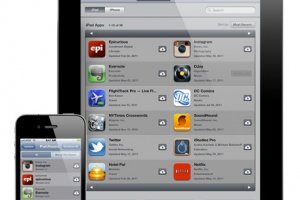 The difference between Apple and Google is even clearer after today’s announcements. Apple is all about the apps. Google may have a stronger footing in the cloud today, but its browser-centric approach to client applications leaves room for Apple to improve things, especially in the mobile realm. Apple is playing to its existing strengths regarding hardware/software integration, but now it’s bringing that game to the cloud, too.
The difference between Apple and Google is even clearer after today’s announcements. Apple is all about the apps. Google may have a stronger footing in the cloud today, but its browser-centric approach to client applications leaves room for Apple to improve things, especially in the mobile realm. Apple is playing to its existing strengths regarding hardware/software integration, but now it’s bringing that game to the cloud, too.
Google’s app-less cloud for tablets
To Google, the iPad is just a larger display surface for ads. Just looking at what Google has done on the iPhone compared to iPad, there’s a definite commitment gap. Unlike Google’s continued commitment to apps on the iPhone, the company seems content to let the web stand in for iPad-specific options. This strategy is not new; it’s very reminiscent of Oracle’s Acorn and Sun Microsystems’ JavaStation. One of the reasons these solutions failed was because they assumed the browser was a good enough application delivery system, and not just a dynamic content delivery system. It’s a failure Google is destined to repeat if it isn’t careful.
Apple’s iOS/OS X updates and the iCloud
Apple’s decision to distribute OS X online via the Mac App Store, make the rebranded MobileMe free, and open the cloud even more with enhanced online music services in iTunes, are clear and decisive steps for a company with its sights set on a networked wireless future. For a company not previously known for a strong cloud presence, Apple has really stepped up its game, especially if you include some of the new enhancements to iOS, including better notification support, single sign-on with Twitter, and the new iMessage service. Like Google, Apple is now heavily invested in the cloud. But Apple isn’t creating web-based access to these services. Instead, it’s enabling the core SDK for developers, and when appropriate, making rich native apps of their own. Making the cloud an invisible backend component of local apps is a great way to get consumer buy-in for a concept that may not be widely understood. It’s definitely easier to understand than the idea of a web app, which is easily confused with a plain old website, and for good reason.
Apple’s blended iOS/OS X app-based approach to the cloud has the benefit of being cross-platform, while avoiding feeling like a “best fit” solution like a web app often can. And while the user interface is distinct for each platform, the code base that developers write to interact with the cloud can be shared across all three. This creates a much deeper experience for the user as they move from platform to platform. It will be interesting to see if Google’s ‘We’ve got a URL for that’ can compete with Apple’s consumer-focused app strategy.
Related content from GigaOM Pro (subscription req’d):
- Mobile Q1: All Eyes on Tablets, T-Mobile and ATT
- How to Market Your iPhone App: A Developer’s Guide
- NewNet Went Social with Partnerships Galore in Q4
Article source: GigOM http://feedproxy.google.com/~r/OmMalik/~3/g7md2GpSfP4/